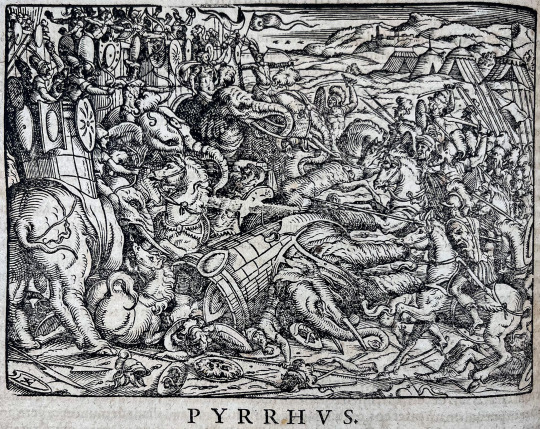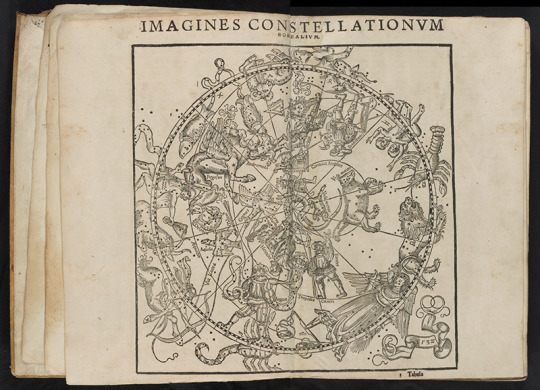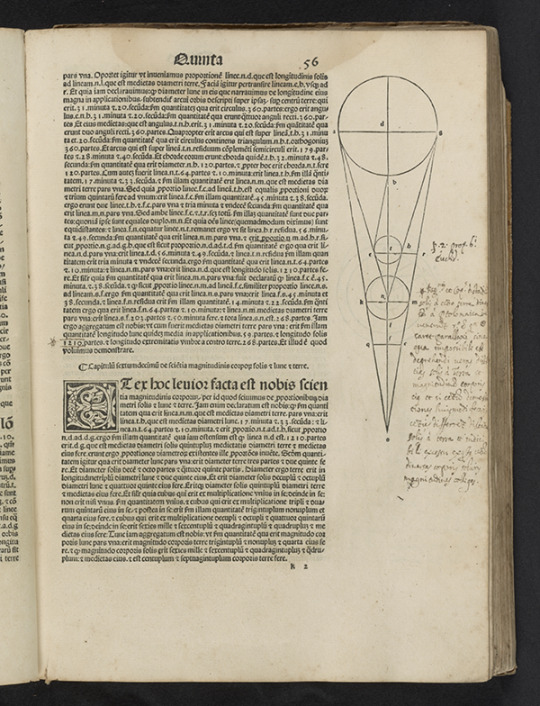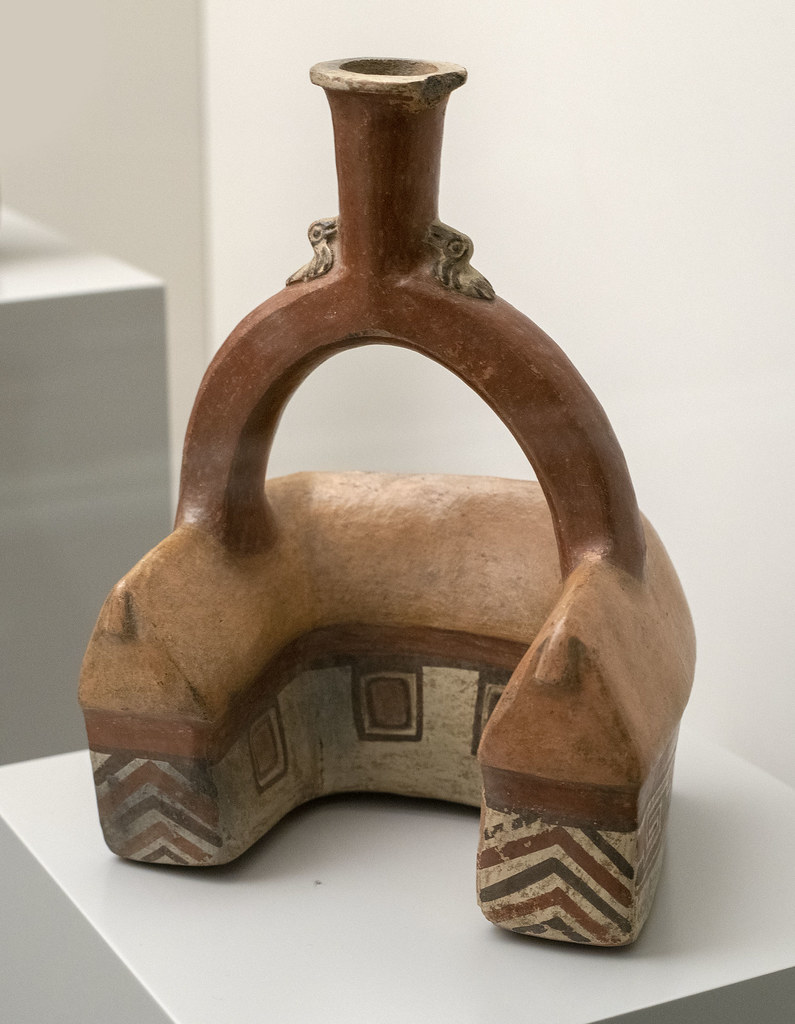#a.d. 1532
Text



~ Serpent ornament.
Date: A.D. 1450–1532
Place of origin: Peru
Culture: Inca (?)
Medium: Cotton, camelid hair
#15th century#16th century#history#museum#archeology#ancient history#archaeology#serpent ornament#serpent#snake#inca#peru#a.d. 1450#a.d. q#a.d. 1532
2K notes
·
View notes
Text
A Plutarchian Woodcut Wednesday
We’re spending our Woodcut Wednesday with this stunning sixteenth-century edition of Plutarch’s classic Parallel Lives featuring the work of artists Jost Amman and Tobias Stimmer.

The allegory of Fama, otherwise known as Fame or Renown, by Tobias Stimmer opens Plutarch’s Parallel Lives on the title page.

Various scenes from the life of the legendary Athenian monarch Theseus, including the hunt of the Calydonian boar and the hero throwing Sciron off a cliff edge. Plutarch pairs the Greek Theseus with the Roman Romulus.

The founding of the city of Rome under Romulus. The murder depicted in the foreground could be Romulus slaying Remus in the dispute over where Rome ought to be built.
Plutarch (ca. 46-after 120 A.D.) was born under Roman rule in Chaeronea, Boeotia, to a wealthy and established Greek family. Plutarch traveled to Athens in the mid-60s to study a variety of subjects, including medicine, physics, Latin, and philosophy. Though they were technically the conquering rulers, Romans at the time valued their Greek subjects’ culture of learning, and Plutarch was among those invited to tour Italy as a lecturer. Plutarch’s moral and philosophical lessons enjoyed success and formed the basis of his later written works. Parallel Lives was penned towards the end of Plutarch’s life when he had returned to Greece and was serving as a statesman and head priest of Apollo.

The unfortunate demise of the scholar Archimedes at the hands of Marcellus’ forces as they sack Syracuse. Plutarch relates that Marcellus’ greatest regret was the death of the famous mathematician.
Parallel Lives (Gk., Bioi paralleloi) is a moralistic set of biographies that examines the lives of notable Greek men and their Roman counterparts. The biographies are moralistic in the sense that Plutarch did not intend to write historically accurate accounts but rather wanted to draw out the lessons to be learned from the examples, both good and bad, of the lives of famous Greek and Roman individuals. Parallel Lives had a profound influence on readers from Plutarch’s contemporaries in the Roman Empire up through to the Middle Ages and early Renaissance. For example, William Shakespeare drew heavily on Plutarch’s Parallel Lives to write the plays Coriolanus, Timon of Athens, Antony and Cleopatra, and Julius Caesar.

Coriolanus and his forces, in the Volscian camp, hear the pleas of his mother, wife, and the women of Rome to stop his attack on the city. Coriolanus relents and the women are later honored with the building of a temple to the goddess Fortuna.
The edition of Parallel Lives featured in this post was printed by Frankfurt am Main publisher Sigmund Feyerabend (1528-1590) in 1580. The text is the Latin translation of Heidelberg University scholar Wilhelm Xylander (1532-1576), who famously produced the first Latin translation of Marcus Aurelius’ Meditations. The woodcut illustrations are the work of the prolific Swiss-German artist Jost Amman (1539-1591) and Swiss painter Tobias Stimmer (1539-1584). As an interesting sidenote, several of the woodcuts appearing in this edition of Plutarch were recycled from Feyerabend’s 1568 edition of Livy’s History of Rome.

Battle between two armies, one on horseback and the other on war elephants. This generic illustration is repeated for Plutarch’s Life of Alexander (the Great) and Life of Pyrrhus (of Epirus). The former famously fought against forces that used elephants; the latter notably used them in battle.

As a change of pace from all the foregoing imagery of bloodshed and gore, we'd like to end with this elaborate woodcut of Aristotle seated at a table of scholars. Aristotle is not among the lives covered in the Bioi paralleloi, but this edition adds a brief biography of the philosopher by Guarino Veronese.
Images from: Plutarch. Vitae illustrium vivorum Graecorum et Romanorum. Frankfurt am Main: Sigmund Feyerabend, 1580. Catalog record: https://bit.ly/3DUnWhl
61 notes
·
View notes
Text
Vasija by Ángel M. Felicísimo
from 1470-1532 A.D made by people of the Inca-Chimú culture.
[Image Description: A tan, reddish stirrup-spout bottle made to look like a house. The vessel is symmetrical, with two birds resting at the top on both sides of the spout. The house is shaped like a horseshoe. The features of the house include the roof, the windows, and upward arrow markings painted at each end. End ID]
12 notes
·
View notes
Text

SAINTS OF THE DAY FOR June 22
St. Alban. St. Alban was the first martyr of England, his own country (homeland). During a persecution of Christians, Alban, though a pagan, hid a priest in his house. The priest made such a great impression on him that Alban received instructions and became a Christian himself. In the meantime, the governor had been told that the priest was hiding in Alban's house, and he sent his soldiers to capture him. But Alban changed clothes with his guest, and gave himself up in his stead. The judge was furious when he found out that the priest had escaped and he said to Alban, "You shall get the punishment he was to get unless you worship the gods." The Saint answered that he would never worship those false gods again. "To what family do you belong?" demanded the judge. "That does not concern you," said Alban. "If you want to know my religion, I am a Christian." Angrily the judge commanded him again to sacrifice to the gods at once. "Your sacrifices are offered to devils," answered the Saint. "They cannot help you or answer your requests. The reward for such sacrifices is the everlasting punishment of Hell." Since he was getting nowhere, the judge had Alban whipped. Then he commanded him to be beheaded. On the way to the place of execution, the soldier who was to kill the Saint was converted himself, and he too, became a martyr.
ST THOMAS MORE, ENGLISH MARTYR, 1535 A.D. St. Thomas More, Martyr (Patron of Lawyers) St. Thomas More was born at London in 1478. After a thorough grounding in religion and the classics, he entered Oxford to study law. Upon leaving the university he embarked on a legal career which took him to Parliament. In 1505, he married his beloved Jane Colt who bore him four children, and when she died at a young age, he married a widow, Alice Middleton, to be a mother for his young children. A wit and a reformer, this learned man numbered Bishops and scholars among his friends and by 1516 wrote his world-famous book "Utopia". He attracted the attention of Henry VIII who appointed him to a succession of high posts and missions, and finally made him Lord Chancellor in 1529. However, he resigned in 1532, at the height of his career and reputation, when Henry persisted in holding his own opinions regarding marriage and the supremacy of the Pope. The rest of his life was spent in writing mostly in defense of the Church. In 1534, with his close friend, St. John Fisher, he refused to render allegiance to the King as the Head of the Church of England and was confined to the Tower. Fifteen months later, and nine days after St. John Fisher's execution, he was tried and convicted of treason. He told the court that he could not go against his conscience and wished his judges that "we may yet hereafter in heaven merrily all meet together to everlasting salvation." And on the scaffold, he told the crowd of spectators that he was dying as "the King's good servant-but God's first." He was beheaded on July 6, 1535.
ST. JOHN FISHER, BISHOP OF ROCHESTER, ENGLISH MARTYR-St. John Fisher was born in Beverly, Yorkshire, in 1459, and educated at Cambridge, from which he received his Master of Arts degree in 1491. He occupied the vicarage of Northallerton, 14911494; then he became proctor of Cambridge University. In 1497, he was appointed confessor to Lady Margaret Beaufort, mother of Henry VII, and became closely associated in her endowments to Cambridge; he created scholarships, introduced Greek and Hebrew into the curriculum, and brought in the world-famous Erasmus as professor of Divinity and Greek. In 1504, he became Bishop of Rochester and Chancellor of Cambridge, in which capacity he also tutored Prince Henry who was to become Henry VIII. St. John was dedicated to the welfare of his diocese and his university. From 1527, this humble servant of God actively opposed the King's divorce proceedings against Catherine, his wife in the sight of God, and steadfastly resisted the encroachment of Henry on the Church. Unlike the other Bishops of the realm, St. John refused to take the oath of succession which acknowledged the issue of Henry and Anne as the legitimate heir to the throne, and he was imprisoned in the tower in April 1534. The next year he was made a Cardinal by Paul III and Henry retaliated by having him beheaded within a month. A half hour before his execution, this dedicated scholar and churchman opened his New Testament for the last time and his eyes fell on the following words from St. John's Gospel: "Eternal life is this: to know You, the only true God, and Him Whom You have sent, Jesus Christ. I have given you glory on earth by finishing the work you gave me to do. Do you now, Father, give me glory at your side". Closing the book, he observed: "There is enough learning in that to last me the rest of my life."
ST. FLAVIUS CLEMENS, ROMAN CONSUL, MARTYR
The ten thousand martyrs of Mount Ararat were, according to a medieval legend, Roman soldiers who, led by Saint Acacius, converted to Christianity and were crucified on Mount Ararat in Armenia by order of the Roman emperor. June 22
B. INNOCENT V, POPE
ST. PAULINUS, BISHOP OF NOLA-It is not common to receive the faith from two “giants” - but that’s exactly what happened with St. Paulinus, whose conversion is credited to the influence of Sts. Ambrose and Augustine. Known for his charitable works, Paulinus was elected Bishop of the Italian city of Nola. He died in the year 431.
St. Aaron. Aaron was a native of Britain. He went to Brittany, where he became a hermit on Cesabre (St. Malo) island. He attracted numerous disciples, among them St. Malo of Wales, and became their Abbot.
0 notes
Text
ISTD: Theoretical Research
The Almagest
The Almagest is an early uranographical work relevant to celestial cartography for pioneering the first scientifc records of celestial phenomena. “Ancient Greek astronomers such as Hipparchus (ca. 190–120 B.C.) and Ptolemy (ca. 100–178 A.D.) constructed star catalogs, where naked-eye stars were organized in constellations and listed with their location in celestial latitude and longitude” (Kanas, 2021).
“One of the earliest uranographical works that has been saved is the Almagest, of the second century A.D. by the Greek astronomer Claudius Ptolemaeus (Ptolemy). The work contained, amongst others, a list of 48 constellations that were recognized in his time and in his part of the world.”
“The Almagest also contains a list of 1,022 stars measured with an exceptional accuracy for those days. The positions are given in ecliptic coordinates, because the Ecliptic was, due to the importance of astrology, the most important line in the sky.” (Tirion, 2017)
The Almagest is most commonly regarded for the scientific importance of its time, but an interesting thing to note is how Ptolomy utilized visual representation to present systematic conclusions.
When exploring the Almagest, the reader needs to be acquainted with the visual representation of the night sky. “The star positions were also given in a quite different way. In his listing of stars in the Great Bear, you read things like: “The star at the tip of the muzzle”, “The western star of those in the two eyes” or “The western star of the two in the forehead”. This meant that people using that list needed to be familar with the anatomy of those heavenly figures” (Tirion, 2017). I found this particularly interesting because it conveys how the role of illustration, though commonly considered as an art form, is equally important in a scientific context. Celestial mapping is a form of visual communication, be it for cultural, spiritual or scientific purposes.
Below: “Table I, an illustration of known constellations, bears a date of 1532 and appears to be a later addition.” (Swetz, 2013)

Below: “Page 56 of the Almagest”
A discussion of a geometric investigation by Hipparchus of Nicaea (ca. 190-120 BCE) of the distances between the earth, the sun, and the moon, accompanied by marginal notes of a previous reader”. (Swetz, 2013)

MAA Mathematical Association of America: Mathematical Treasure: Ptolemy’s Almagest by Frank J. Swetz (https://www.maa.org/press/periodicals/convergence/mathematical-treasure-ptolemy-s-almagest)
0 notes
Photo

Sling, A.D. 1450–1532, Metropolitan Museum of Art: Arts of Africa, Oceania, and the Americas
Bequest of Arthur M. Bullowa, 1993
Size: Length 54-1/2 in.
Medium: Camelid hair
https://www.metmuseum.org/art/collection/search/316928
30 notes
·
View notes
Photo

Portrait Jar in Form of Human Head
Peru
Inca
A.D. 1430-1532
Ceramic
93 notes
·
View notes
Photo




Serpent ornament
Date: A.D. 1450–1532
Geography: Peru
Culture: Inca (?)
Medium: Cotton, camelid hair
The Met
133 notes
·
View notes
Photo

An anonymous 16th-century portrait of Atahualpa,last Inca Emperor.Ruled A.D. 1532-1533
37 notes
·
View notes
Text

~ Tunic Fragment.
Date: A.D. 1470-1532
Culture: Chimú
Place of origin: Peru, south coast, Possibly Nazca Valley
Medium: Cotton, plain weave; embellished with feathers knotted and attached with cotton in back stitches
#15th century#16th century#tunic#tunic fragment#chimú#perú#south america#nazca valley#a.d. 1470#a.d. 1532
176 notes
·
View notes
Photo

Kero Drinking Cup. Polychrome painted wood. PERU, SOUTHERN HIGHLANDS. Early Colonial Period (1532-1650 A.D.). Montreal Museum of Fine Arts.
3 notes
·
View notes
Photo

👍Qosqo (Cusco today) was the navel of the world for the Incas (1200 to 1532 A.D.), the center of the universe and main city.☝️😲 . . . #machupicchu #machupicchuhop #vallesagrado #vallerojo #salkantaytrek #choquequiraotrekking #photo #humantaylake #RainbowMountain #chinchero #maras #Moray #bytrain https://www.instagram.com/p/B2zL9_pF0Lw/?igshid=1310y3wujbe0l
#machupicchu#machupicchuhop#vallesagrado#vallerojo#salkantaytrek#choquequiraotrekking#photo#humantaylake#rainbowmountain#chinchero#maras#moray#bytrain
0 notes
Text

Saint of the day June 22
St. Alban. St. Alban was the first martyr of England, his own country (homeland). During a persecution of Christians, Alban, though a pagan, hid a priest in his house. The priest made such a great impression on him that Alban received instructions and became a Christian himself. In the meantime, the governor had been told that the priest was hiding in Alban's house, and he sent his soldiers to capture him. But Alban changed clothes with his guest, and gave himself up in his stead. The judge was furious when he found out that the priest had escaped and he said to Alban, "You shall get the punishment he was to get unless you worship the gods." The Saint answered that he would never worship those false gods again. "To what family do you belong?" demanded the judge. "That does not concern you," said Alban. "If you want to know my religion, I am a Christian." Angrily the judge commanded him again to sacrifice to the gods at once. "Your sacrifices are offered to devils," answered the Saint. "They cannot help you or answer your requests. The reward for such sacrifices is the everlasting punishment of Hell." Since he was getting nowhere, the judge had Alban whipped. Then he commanded him to be beheaded. On the way to the place of execution, the soldier who was to kill the Saint was converted himself, and he too, became a martyr.
St. Thomas More, 1535 A.D. St. Thomas More, Martyr (Patron of Lawyers) St. Thomas More was born at London in 1478. After a thorough grounding in religion and the classics, he entered Oxford to study law. Upon leaving the university he embarked on a legal career which took him to Parliament. In 1505, he married his beloved Jane Colt who bore him four children, and when she died at a young age, he married a widow, Alice Middleton, to be a mother for his young children. A wit and a reformer, this learned man numbered Bishops and scholars among his friends and by 1516 wrote his world-famous book "Utopia". He attracted the attention of Henry VIII who appointed him to a succession of high posts and missions, and finally made him Lord Chancellor in 1529. However, he resigned in 1532, at the height of his career and reputation, when Henry persisted in holding his own opinions regarding marriage and the supremacy of the Pope. The rest of his life was spent in writing mostly in defense of the Church. In 1534, with his close friend, St. John Fisher, he refused to render allegiance to the King as the Head of the Church of England and was confined to the Tower. Fifteen months later, and nine days after St. John Fisher's execution, he was tried and convicted of treason. He told the court that he could not go against his conscience and wished his judges that "we may yet hereafter in heaven merrily all meet together to everlasting salvation." And on the scaffold, he told the crowd of spectators that he was dying as "the King's good servant-but God's first." He was beheaded on July 6, 1535.
St. John Fisher. St. John Fisher was born in Beverly, Yorkshire, in 1459, and educated at Cambridge, from which he received his Master of Arts degree in 1491. He occupied the vicarage of Northallerton, 14911494; then he became proctor of Cambridge University. In 1497, he was appointed confessor to Lady Margaret Beaufort, mother of Henry VII, and became closely associated in her endowments to Cambridge; he created scholarships, introduced Greek and Hebrew into the curriculum, and brought in the world-famous Erasmus as professor of Divinity and Greek. In 1504, he became Bishop of Rochester and Chancellor of Cambridge, in which capacity he also tutored Prince Henry who was to become Henry VIII. St. John was dedicated to the welfare of his diocese and his university. From 1527, this humble servant of God actively opposed the King's divorce proceedings against Catherine, his wife in the sight of God
St. Aaron. Aaron was a native of Britain. He went to Brittany, where he became a hermit on Cesabre (St. Malo) island. He attracted numerous disciples, among them St. Malo of Wales, and became their Abbot.
ST. PAULINUS, ST. FLAVIUS CLEMENS,
The ten thousand martyrs of Mount Ararat were, according to a medieval legend, Roman soldiers who, led by Saint Acacius, converted to Christianity and were crucified on Mount Ararat in Armenia by order of the Roman emperor. June 22
0 notes
Text
The Stone Giants of Peru | The Travels of Pedro De Cieza De Leon A.D. 1532-50
The 3 part series “True Legends” by GenSix is the best place to start if your interested in learning more about the Giants of Peru. Giants who were still fresh in the minds of the residents in the region when the Spanish assholes showed up with their disease and butchered all the Inca kings, including the famous Tupacamaru the 1st. The ancestors of Tupacamara I were famous revolutionaries who…
View On WordPress
0 notes
Text
Evolution of Marine Insurance
Around the 13th Century, Lombardy of Northern Italy emerged as a flourishing center for trade. The early practice of Insurance of ships is called marine Insurance and is associated with the merchants of the cities of Lombardy. The Lombard’s also established themselves in London and other cities. When the Germans conquered and devastated the cities of Northern Italy, many of the mercantile families of Lombardy migrated to the more favored and settled countries where they would be more secure and free to practice their trade. Many of them went to London. Wherever they went the Lombard’s took with them the practices of marine Insurance, banking and money lending. The earliest known policy issued in London was inscribed in Italian and was dated 20th Sept. 1547. The policy written in English dated 1555 was known to be on the ship “Santa Crux” from any part of the Isles of India of Calicut to Lisbon.
In contrast to the Jews who demanded very high rates of interest for their loans, the Lombard’s offered low rates. Because of this, they were greatly favored In London. They rapidly became powerful and wealthy. England benefited greatly from the peculiar skills and acumen of the Lombard’s. Policies of marine insurance even today bear the roots of Lombard Influences. The Lombard’s even built a street of business premises with residential accommodation over, which still retains the name of Lombard Street. However, the original structures were all wiped out by the Great Fire of London 1666. The native people of London naturally resented the success of the foreign merchants, As a result, many laws were passed aimed against Lombard’s.
Soon the Lombard’s finding their scope for commercial activities restricted severed their connections and left for other parts.
MERCHANTS OF HANSA TOWNS
Contemporaneously with the Lombards, marine Insurance was practiced by the merchants of the Hansa towns. It is believed that in a way of understanding, probably informal, the Lombards confined their operations in Europe to the south of Bruges, whilst the Hanse merchants controlled commerce to the north of that city. Hansa merchants first settled in England during the reign of Edward the Confessor, when they were originally known as 'Easterlings, or 'Easterlings'. As in the case of the Lombards, the Hansa merchants also kept themselves distant from the native population. They established themselves in what were almost fortified warehouses and great distributing centers. But at the same time, they contributed substantially towards setting the foundation-stone of Britain's later pre-eminence. In overseas trade, they played a vital role in suppressing piracy. They were relieved from the payment of levies towards combating the pirates who at that time infested the Thames; probably because they undertook operations on their account to repress these.
In case of Lombards, the British merchants did not like the progress of Hansa merchants. The local movement gained momentum and the first ‘Royal Exchange’, a money market was established. Expulsion of the Hanse merchants was mainly a consequence of the jealousy of the Company of Merchant Adventurers. This was an organization set up by English merchants, who by this time had themselves started participating in marine insurance under the reign of Elizabeth I, In A.D. 1578, a decree was passed declaring the privileges of the Hansa merchants are null and void forever. They threatened that unless their privileges were restored, the members of the Company of Merchant Adventurers established in the cities who came under the control of their league would be expelled
Thereupon the temper of Elizabeth was aroused and an order issued for the departure of every Hanse merchant from the shores of England by 28th February 1597
The instigators of the expulsion of these merchants did not desire the destruction of British trade, but merely its transfer into the hands of British traders, and this they achieved. The 'market' for marine insurance was for long thereafter mainly situated at the first Royal Exchange, and there it continued until the rise of Lloyd' Coffee House
FIRST LAW ON MARINE INSURANCE
The first enactment relating to marine insurance to be placed on the statute book in England became law at the opening of the seventeenth century and was entitled 'An Act touching Policies of Assurances used among Merchants'. A previous statute passed in AD 1532 had required that notices of the sailings of ships should be announced weekly in Lombard Street, but whilst this is of interest in connection with marine insurance, it does not strictly relate thereto. It is also known that a measure was enacted in Scotland in the reign of James I, dated AD 1427, entitled "The Leave to merchants to Sure their Guide's', but "it is not established that it contained any specific reference to marine Insurance, although this is probable. For this reason, it is usual to describe the Elizabethan Act. which was put through Parliament In three readings in the space of eight days in AD 1601 as the first British Statute relating to marine Insurance
The importance of this statute is that it demonstrates how firmly established was marine Insurance by the time of Elizabeth
0 notes
